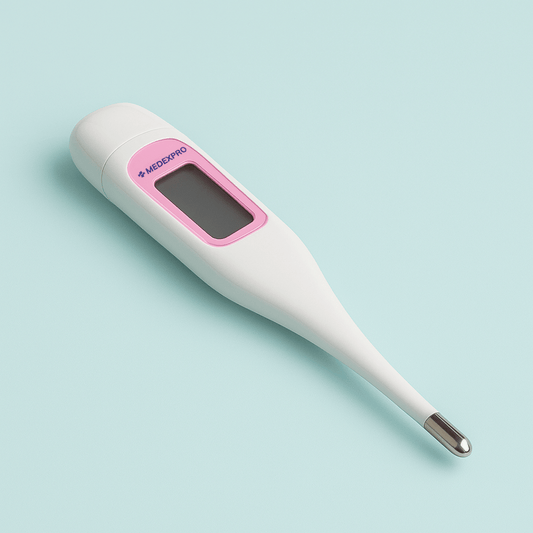First, what do we mean by “more than once a month”?
“Month” is a calendar idea; your ovaries don’t follow the calendar. You can technically ovulate twice in the same calendar month if your cycles are short or your ovulation happens right at the start and end of a month. That’s different from ovulating twice in the same menstrual cycle, which is where most of the confusion lives. So let’s untangle both.
Ovulation 101—one event, sometimes multiple eggs
Ovulation is the release of an egg after a surge of luteinizing hormone (LH). In a typical cycle, there’s one ovulatory episode. However, that episode can involve more than one egg if two (or more) follicles are mature enough to rupture within a short window—usually the same day or within about 24 hours. That’s how fraternal twins happen: two separate eggs, two separate ovulations, but still considered one ovulatory event in one cycle.
Once ovulation has occurred and progesterone rises, your body shifts into the luteal phase. Progesterone stabilises the uterine lining and prevents another LH surge, which is why the body doesn’t keep releasing more eggs days later in the same cycle.
Follicle “waves” vs. multiple ovulations
Here’s a nuance many people never hear: during the follicular phase (the first half of your cycle), your ovaries often develop follicles in waves. Early waves may fizzle out; a later wave can produce the dominant follicle that finally ovulates. Seeing multiple waves doesn’t mean you’re ovulating multiple times. It means your ovaries are running a selection process before the main event. Only when LH surges and the dominant follicle (or sometimes two) rupture do we call it ovulation.
So, can you ovulate twice in the same cycle?
Typically no—not separated by several days. What can (and does) happen is dual ovulation: two eggs released nearly together (same day/within ~24 hours). From a tracking point of view, you would not see two distinct fertile windows several days apart in one cycle.
What increases the chance of releasing two eggs?
Some bodies are more prone to hyperovulation (releasing more than one egg in that single ovulatory window). Genetics can play a role (family history of fraternal twins), as can age (mid-30s can see a slight uptick), recent stopping of certain contraceptives, and of course fertility medications like letrozole or clomiphene, which are designed to recruit more than one follicle.
What about superfetation—the idea of conceiving again while already pregnant?
In humans, superfetation (a new ovulation and conception days or weeks into an existing pregnancy) is extraordinarily rare. Progesterone after conception suppresses the hormonal chain that would otherwise lead to another ovulation. Most stories online that sound like superfetation are explained by slightly different implantation times or growth patterns—not a second, separate ovulation after pregnancy has already begun.
Why some trackers look like you “ovulated twice”
If you’ve ever seen two LH peaks on your ovulation tests or felt fertile signs more than once, it doesn’t automatically mean two ovulations. A few explanations:
False starts: Your body can gear up (rising estrogen, fertile-quality cervical mucus, even a brief LH rise) and then stall—stress, illness, travel, or sleep disruption can all interfere. The true ovulation usually follows with a stronger, sustained LH surge.
PCOS patterns: With polycystic ovary syndrome, LH can be elevated or fluctuate, creating multiple positive-looking tests without an actual ovulation each time. Confirmation with post-ovulation signs helps.
Interpreting strips: Very close lines over several days can feel like multiple peaks; the key is the clearest, darkest surge paired with other signs.
Predicting vs. confirming—how to really know
No single method tells the whole story in real time. Combining signals is powerful:
Cervical mucus gets slippery, clear, and stretchy in the most fertile days.
LH tests (e.g., OvaDetect) flag the surge that precedes ovulation by ~24–36 hours.
BBT (with a sensitive thermometer like OvaTrack) confirms ovulation after the fact via a sustained temperature rise.
Together, they help differentiate a false start from the true ovulatory window and reduce the “was that two ovulations?” confusion.
Practical timing without the panic
If you see what looks like two fertile patches in one cycle, treat the first clear LH surge + fertile mucus as your prime window. If ovulation doesn’t confirm (no sustained BBT rise 2–3 days later), keep observing—your body may try again, and the second surge might be the real one. It’s not two separate ovulations days apart—it’s your body completing the same ovulatory process on a later attempt.
When to check in with a clinician
If your cycles are consistently irregular, you’re seeing repeated LH surges without a BBT shift, or your luteal phase (time from ovulation to period) is consistently under ~10 days, a clinician can help investigate hormones, thyroid function, prolactin, insulin resistance, or other contributors. This doesn’t mean you can’t conceive—it just means you deserve tailored support.
The bottom line
You can ovulate twice in a calendar month if your cycle timing straddles the month edges.
In one cycle, you generally have one ovulatory episode, sometimes with two eggs released within ~24 hours (the twin scenario).
Apparent “double ovulation” days apart is usually your body gearing up more than once before the true ovulation, not two separate fertile windows.
Pairing body awareness with tools (OvaDetect for prediction, OvaTrack for confirmation) gives you clarity—and calm.

If you need help going through any block, talking with a TTC consultant can help! Book a FREE 15-minute virtual consult today!
Book a TTC consultation












